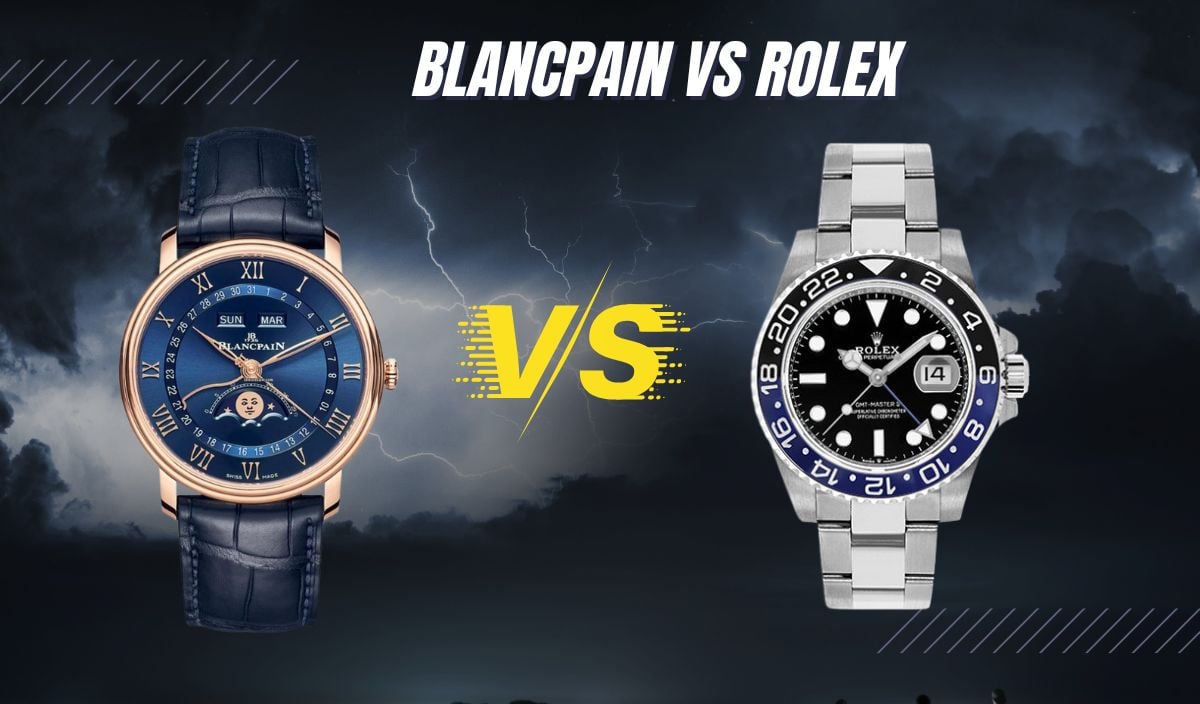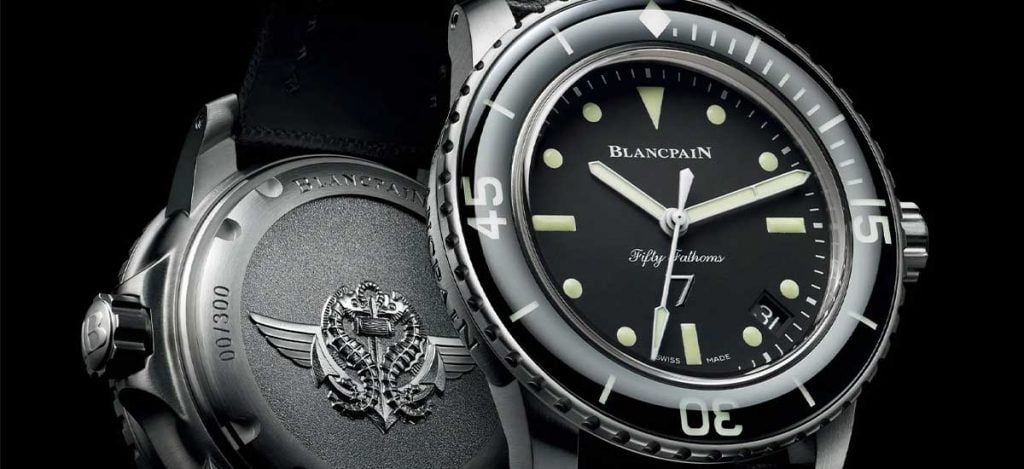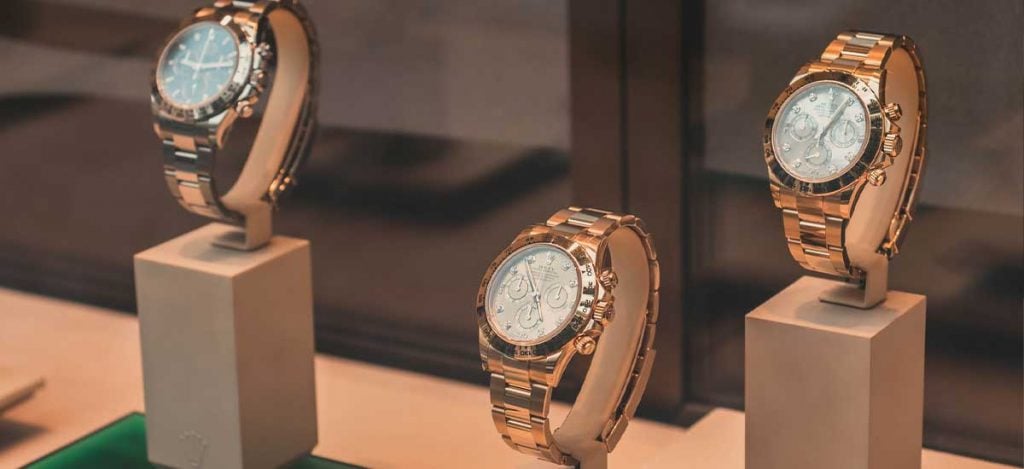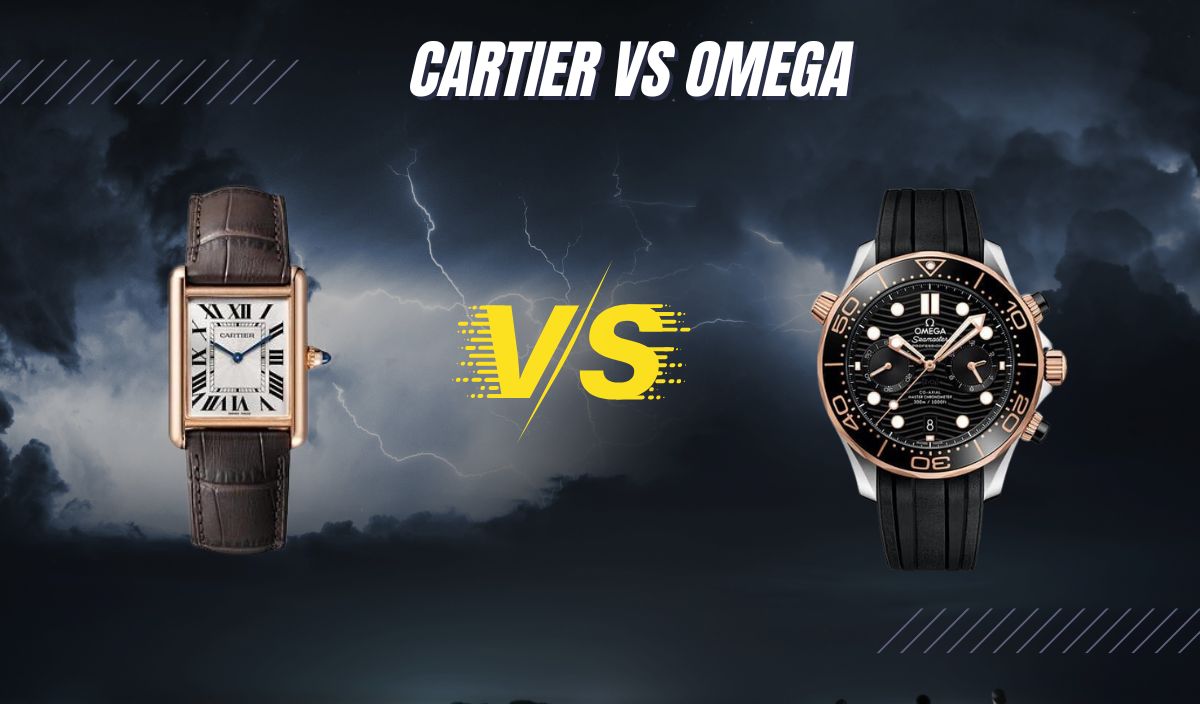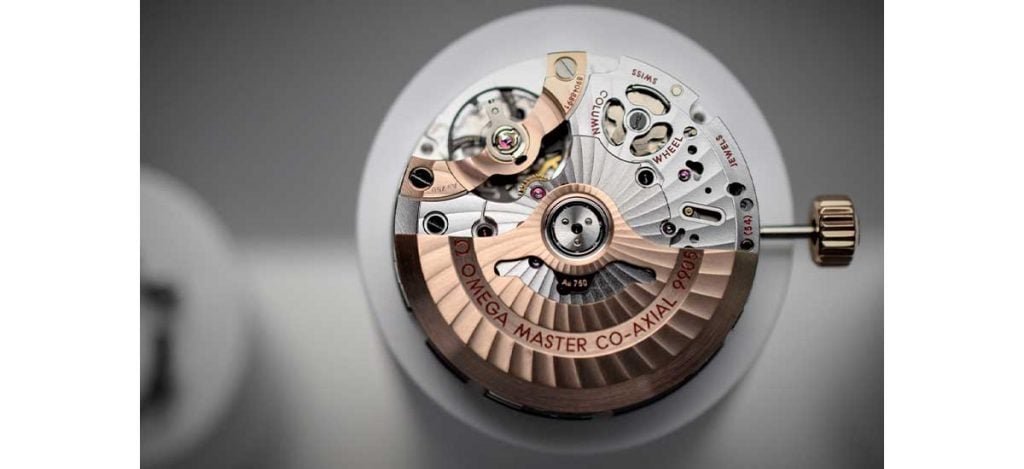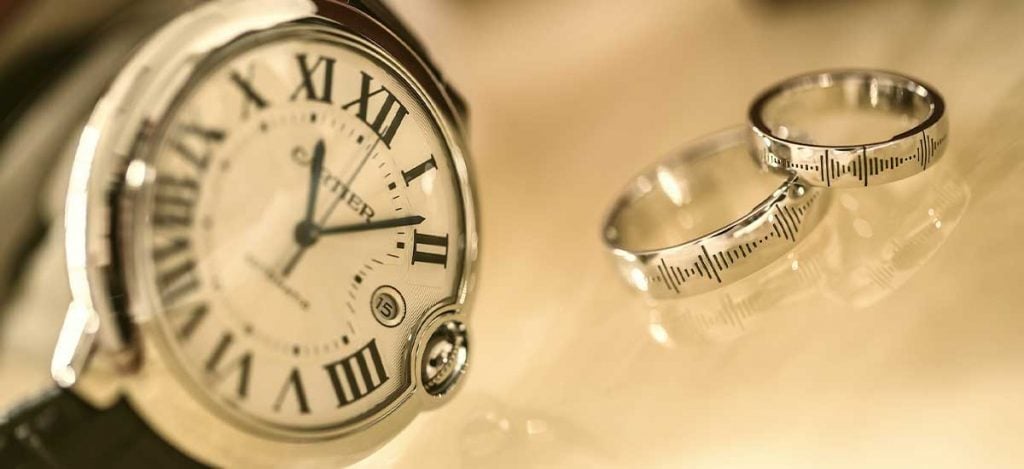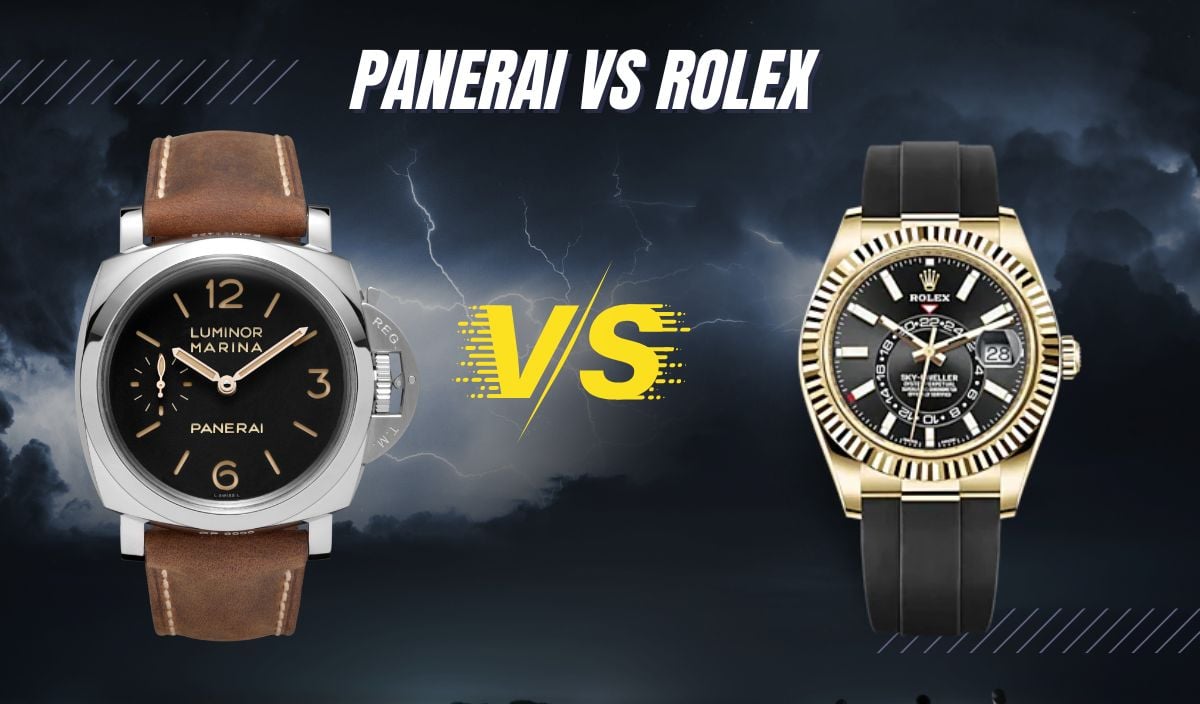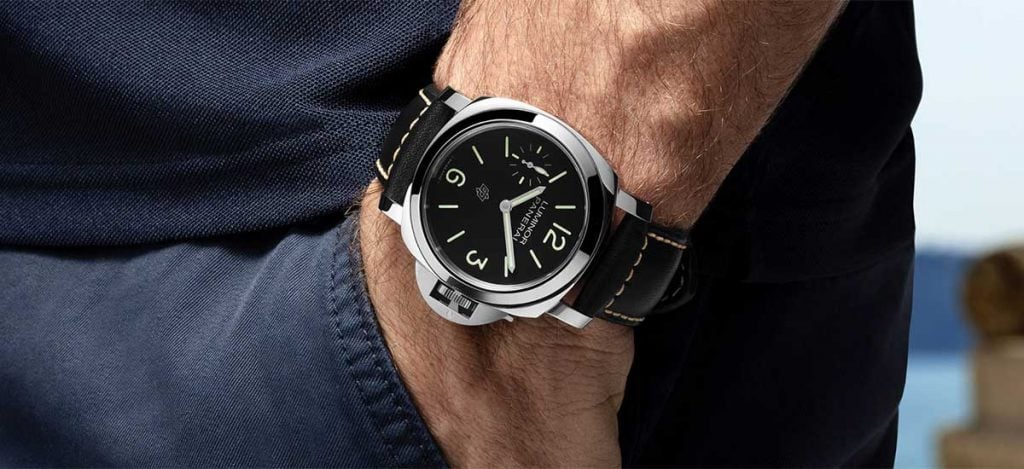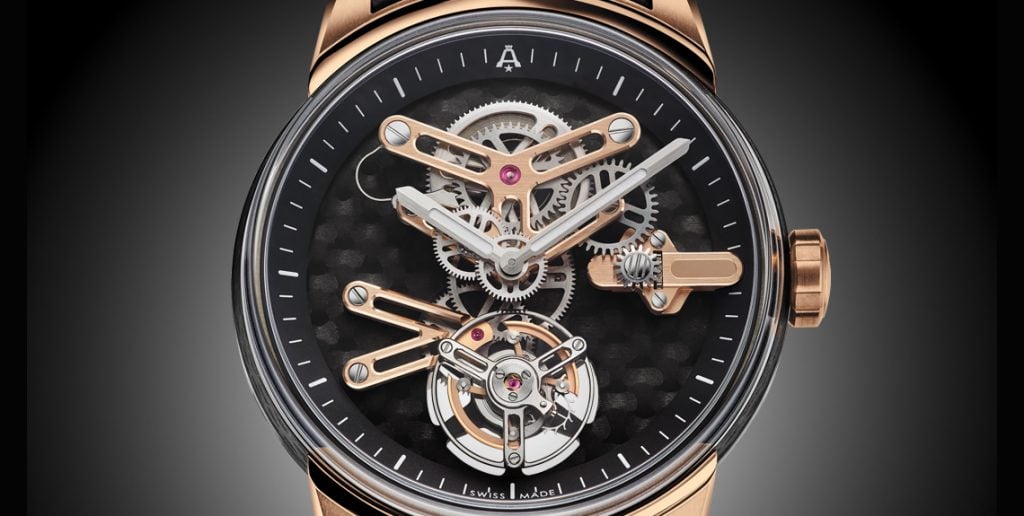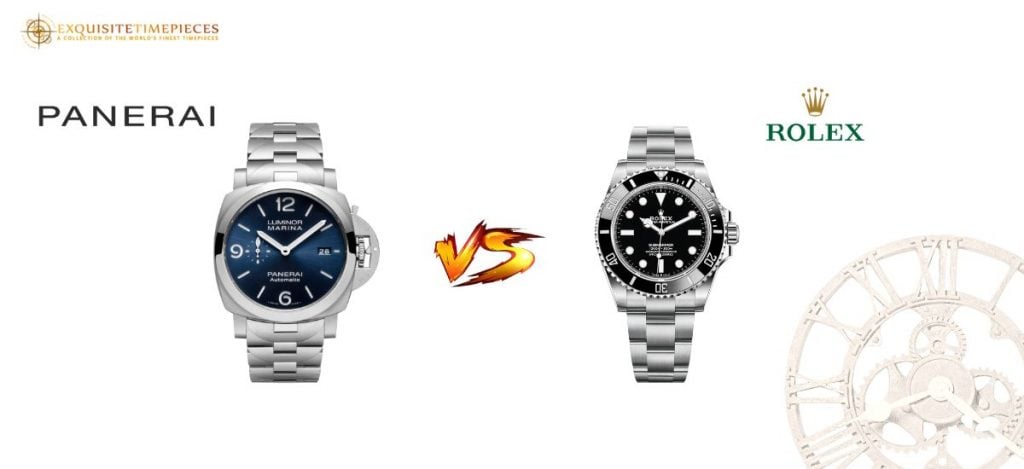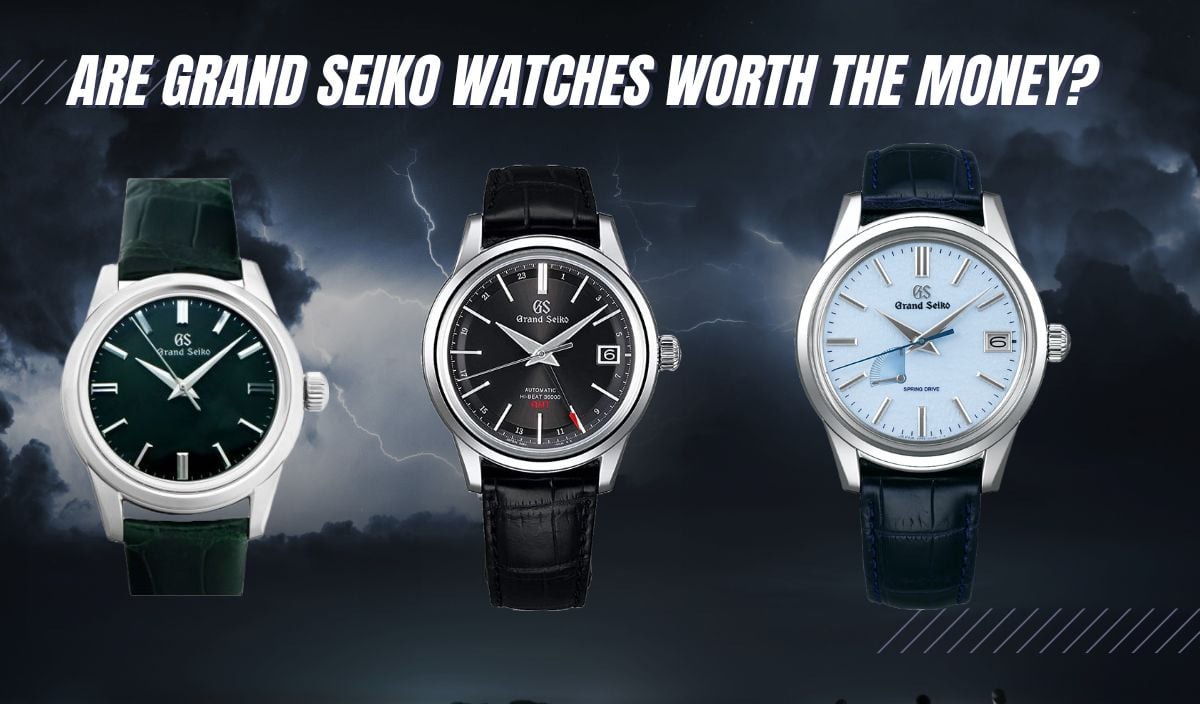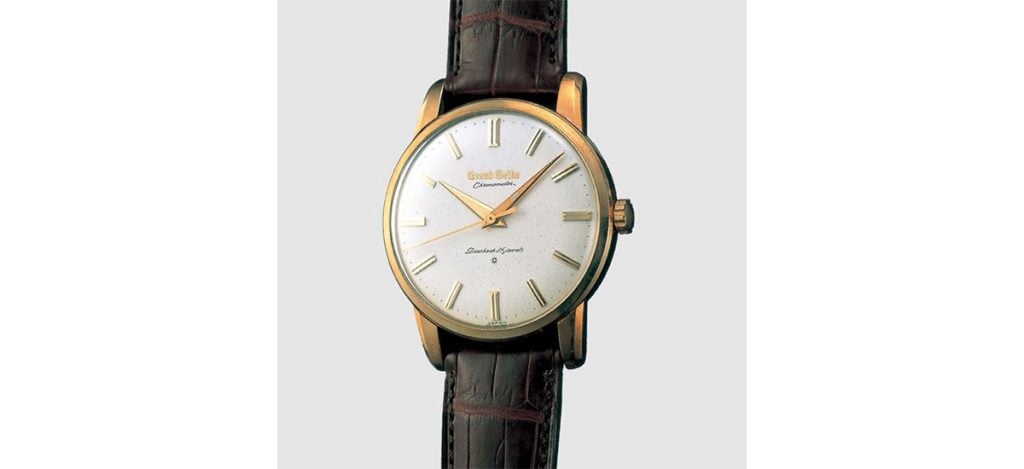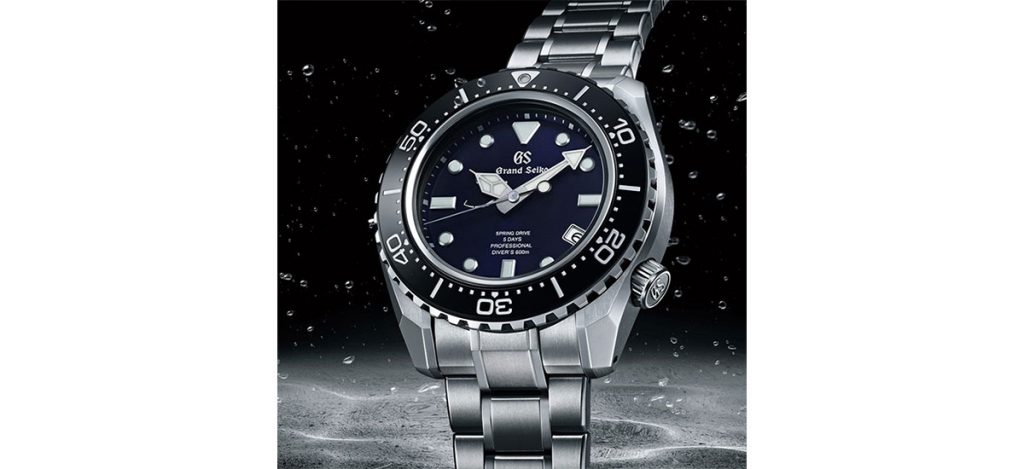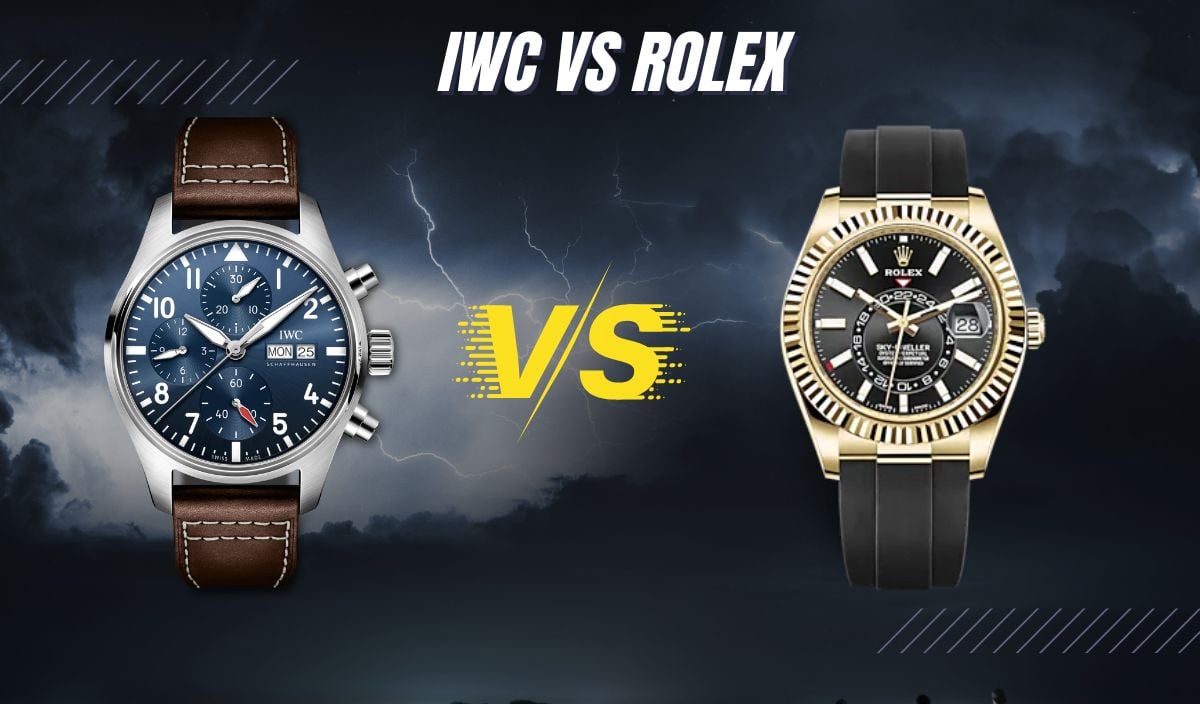
You find yourself in the market for a new Swiss-made luxury timepiece. You have narrowed your choices to either a Rolex or an IWC (International Watch Company). In this article, I will juxtapose a few of the most popular models from each company.
We’ll start with the background of each watch house and how they became the respected brands they are today. Along the way, you will learn the features, pros, and cons of each brand and their models and walk away illuminated and ready to make your next purchase.
IWC timepieces
IWC or the International Watch Company, as it is more formally known, was founded in 1868 by the American watchmaker and businessman Florentine Ariosto Jones. While in Boston, Massachusetts, Jones conceived the idea of combining advanced American production technologies with the skilled craftsmanship of Swiss watchmakers.
With this mandate, Jones traveled to Switzerland to start his venture. Upon arriving in Switzerland, he did not receive the warmest reception in places like Geneve or other Swiss centers of watchmaking. Perhaps this was due to Jones being a foreigner or that the watchmakers in these regions were wary of an outsider and his vision. Instead of becoming discouraged, he went as far north as he could and set up shop in Schafhausen near the German border and on the Rhine river.
Being on the Rhine river became a prescient decision because it enabled IWC to harness the river’s flow to provide hydroelectric power for its factory. IWC’s first movement was the Jones caliber which led to the introduction of the Pallweber pocket watch in 1885. The Pallweber pocket watch was innovative due to it incorporating a digital display for both the hours and the minutes.
By the end of the nineteenth century, the company was producing wristwatches that featured their caliber 64-pocket watch movements. Every aspect of the production of an IWC timepiece takes place in-house. IWC is a completely vertically integrated watch manufacturer.
Product design, engineering, case, and movement parts production, and hand polishing are all completed at the IWC facility. In addition to the completion of every IWC watch, each is tested in their laboratory for water resistance and pressure parameters, extreme impact testing, and the final inspection before delivery to their exclusive array of dealers worldwide.
The Use and Development of Innovative Materials
IWC is also renowned for its use of innovative materials. Besides platinum and titanium, IWC uses their patented Ceratanium in some of their watches. Ceratanium is a ceramized titanium that is as tough and almost as light as traditional titanium but as hard and scratch resistant as ceramic. The case is used in the Pilot’s Watch Chronograph 41 Top Gun Certanium.
Another patented case material is 18 ct. Armor Gold. This new type of gold is harder and more wear-resistant than conventional 5N gold. 5N gold has a reddish tint due to the combination of 75% yellow 18 ct. gold and 25% copper. The 18 ct. Gold is combined with copper in a process where the microstructure of the alloy is transformed to produce the Armor Gold.
This material is featured in the Big Pilot’s Watch Constant-Force Tourbillon Edition “Le Petit Prince.”
The company also has taken bronze and combined it with copper, aluminum, and iron to produce a case that is 50% harder than standard bronze and nearly as hard as steel. This innovation is reflected in the Pilot’s Watch Automatic Spitfire.
Lastly, IWC has made great inroads into the use of ceramics for creating cases for some of its watches. IWC introduced the world’s first ceramic case watch in 1986. The Davinci Perpetual Calendar featured a white-colored ceramic case. Ceramic is unusually hard and scratch resistant but presents a challenge in the manufacturing of watches.
Ceramic cases are a mixture of powders formed under intense heat. Unfortunately, the cases shrink by almost one-third during the process therefore the design and engineering must be extremely precise so that the accompanying movement fits exactly in the finished case. Today, ceramic cases in black, brown, and sand colors are available in the watch collection.
IWC is a major proponent of using renewable energy, making sustainability a prime focus, and a commitment to accelerating biodiversity efforts within the watch industry. As per the corporate website, the purpose of IWC is “Engineering Beyond Time”. Transparency, circularity, and responsibility are the guiding principles and inspire all that the company pursues.
IWC Models and Collections
Six prominent collections comprise the IWC brand. The “Pilot’s Watch” has a starting retail price of $4250.00. The “Portofino” starts at $5050.00. The “Davinci” with an opening price tag of $5550.00. The “Ingenieur” with an entrance price point of $4750.00. The “Aquatimer” begins at $5950.00. And lastly the “Portugieser” collection.
The “Portugieser” timepieces are some of the most complicated wristwatches produced in Switzerland. The watches exhibit superior craftsmanship and are comparable to works of art. $7500.00 will get you a base model with prices ranging into hundreds of thousands of dollars for the most sophisticated and complicated models.
In addition to the six collections mentioned above, there is also a collection of Grand Complications and a vintage collection of older IWC timepieces. Three IWC Horological specialties are the following watches;
- Mechanical Perpetual Calendar is accurate to the year 2499.
- The Grand Complication with 659 individual components.
- The Tourbillion Mystere is a masterpiece of miniaturization (81 parts weighing a total of.433 grams).
Rolex’s History
Rolex, surprisingly, has been around for a far shorter time than most other luxury Swiss brands. This is an even greater testimony to the success of the Rolex brand and the reputation the company enjoys today. Much of this success is attributable to Hans Wilsdorf, the English entrepreneur responsible for the creation of the brand.
Though conceived in England, Wildorf created the Rolex brand in 1908 and would ultimately move the entire operation to Geneva, Switzerland where he would create the first water-proof self-winding wristwatch with a perpetual rotor. In fact, a patent was issued to Rolex in 1926 for the world’s first waterproof watch, which today is the oyster case.
Rolex has filed for over 500 patents over the history of its existence for innovations that range from its movements to its exclusive Cerachrom bezels and bezel inserts. Cerachrom is a ceramic material that is virtually impervious to scratches and its color is unaffected by the sun’s ultraviolet rays. Rolex today is a completely vertically integrated company with every step of the watch’s conception to completion performed by the Rolex team.
To assure the continued success and commitment to producing the highest quality timepieces, Rolex has an exclusive training center that educates, trains, and acclimates every employee to their culture of excellence as well as one of the most rigorous testing labs to ensure the integrity of every watch.
There is even a department of tribology where the scientific study of friction, wear, lubrication, and how moving parts interact in every aspect of a watch’s movement and physical parts exists in order to continue Rolex’s constant perfection in watchmaking.
Another attribute of the Rolex collection is its commitment to precision and accuracy. In this aspect, Rolex and Zenith share a common trait, though every Rolex is not only a certified chronometer but a superlative chronometer as reflected by the certificate and green seal that accompanies each wristwatch. The parameters of accuracy exceed those required by the COSC. which are -4/+6 seconds per day. The superlative identification reflects a deviation of -2/+2 seconds daily.
IWC Aquatimer vs. Rolex Submariner
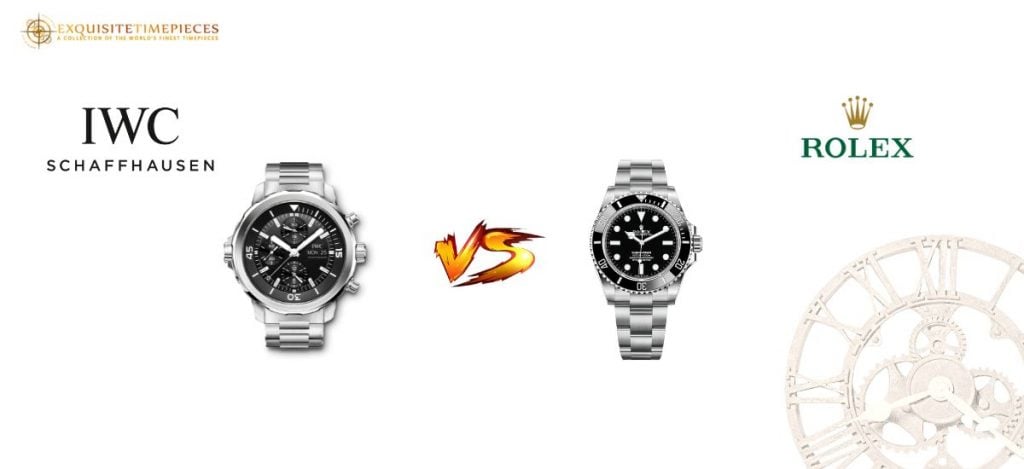
The IWC Aquatimer is a diver watch that can trace its original design back to 1967. The newest model boasts many modern features and is rather unique in its appearance as it is a diver watch that appears to be less diver and more like an everyday sports watch for men. The watch case is made of both polished and brushed stainless steel and measures 42 mm. In diameter.
The height of the case is 14 mm. It has an anti-reflective sapphire crystal and is available in either a black or blue dial. The fascinating feature of the dial is that the inner dial indices are treated in a blue color luminescence whereas the outer dial markings shine in a green color luminescence which is evidenced in the dark and underwater.
The combination of colors is striking and distinctly IWC. The watch has a screw-down crown at the three positions and a helium escape valve at the nine positions. The timepiece is water resistant to 300 meters and available with a textured rubber strap which is slightly tapered or a stainless steel bracelet. The movement is an in-house IWC caliber 30120 automatic self-winding movements vibrating at a frequency of 28,800 A/h, with 21 jewels, 163 components, and a 40-hour power reserve.
Another unusual feature of this timepiece is that the lapsed time markings that are usually on the outside watch bezel are located on the outer dial. The bezel is bidirectional and can be used in one direction to set the lapsed time feature but also move in the other direction without affecting the setting of the inner bezel.
The approximate retail price of the strap mode is $6100.00 or $7000.00 with a stainless steel bracelet. The Submariner is one of the Rolex collection’s most popular watches. For comparison, I will elaborate on the base model’s features, which are available in stainless steel in either a date or non-date version. The dimensions of the case are 41mm.
Wide and 48 mm. From lug to lug. The lug width is 20 mm. And the case is 12.5 mm. Thick. The heartbeat of this watch is an automatic mechanical caliber 3130 in-house manufactured Rolex movement. The watch has a power reserve of two days.
The timepiece is outfitted with a sapphire crystal and a cerachrom bezel with markings filled with platinum PVD coating. To round out its appearance the dial has “Blue” chroma light lume markers for easy visibility in the dark or underwater. Water resistance is rated at 300 meters. The approximate retail for the non-date model is $8950.00 and the data model is $10,100.00.
Conclusion
Both timepieces are beautiful and reflect superb fit and finishes. If one has the means, I would own both watches. If I was on a tight budget, I’d go for the Aquatimer. But, with a little bit of leeway, the Sub would be an instant-buy.
IWC Big Pilot vs. Rolex Submariner
Since I elaborated on the Rolex Submariner in the previous comparison, I suggest you refer back to the technical information needed for contrasting the IWC Big Pilot. The IWC Big Pilot is a watch that has a rich history dating back to the 1940s. It has become a smaller, more wearable size in its present configuration. Measurements are as follows; the stainless steel watch case has a diameter of 43 mm., a thickness of 13.2 mm., 52.5 mm lug to lug, and a lug width of 21 mm.
It has a sapphire crystal on both the front and the rear of the watch and comes in a black or blue dial. The markers are treated in a green luminescence and the watch is water-resistant to 100 meters. The riveted leather strap adds a level of distinction as well as sophistication. The caliber 82100 automatic self-winding movement vibrates at a frequency of 28,800 A/h and has a power reserve of 60 hours.
The skeletal back celebrates a host of fine finishes such as Cotes de Geneve (striped and wave configurations), linear brushing, and other artistic embellishments. The approximate retail price for the Big Pilot is $8950.00 on a strap, $9950.00 with a stainless steel bracelet, and $10,500.00 with a ceramic case. Other variations range in price from $9500.00 to 32,800.00.
Conclusion
Both watches are each iconic in their own right. I find that each would appeal to a different potential customer. The Submariner is easily the more recognized of the two, but the oversized beauty of the case and ornate crown, attention to detail, and the skeletal back of the Big Pilot set it apart from the Rolex. At comparable prices both make fine choices.
IWC Ingenieur vs. Rolex Explorer
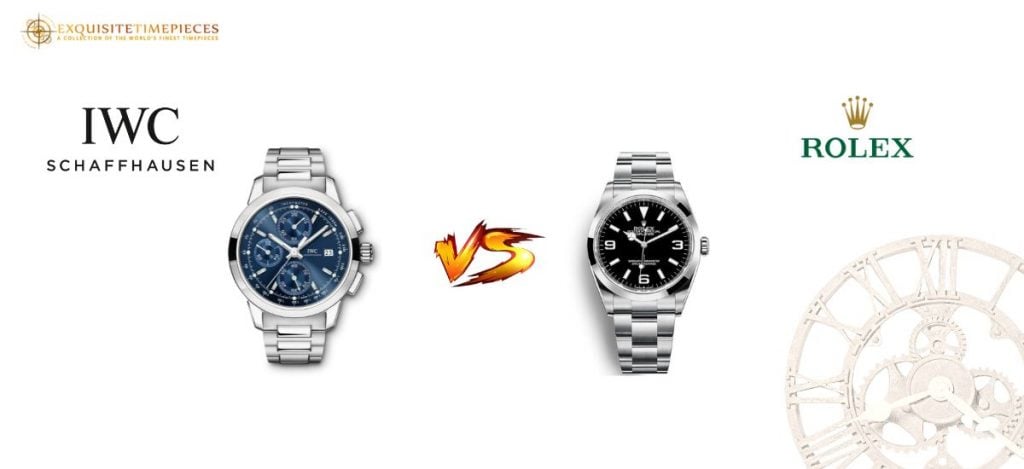
The Ingenieur is a surprisingly affordable entry into the world of IWC watches. With its 40 mm. Stainless steel case the watch has a height of 10.3 mm. and measures 48.5 mm. from lug to lug. The present Ingenieur model resembles the 1967 Ref. 866 and the 2008 models with its round case and distinct tapered lugs and continues the Ingenieur legacy of water resistance, antimagnetic properties, and high precision.
At the heart of the watch is a Sellita SW300-based caliber 35111 automatic self-winding movement that vibrates at 28,800 A/h and has 25 jewels. It also has a power reserve of 42 hours and is water resistant to 120 meters. The present-day model is available with a silver plated dial (gray in color) with luminescent indices and completed with a black alligator leather strap. The approximate retail price of the strap model is $4750.00. There are four other variations of the Ingenieur available. They are as follows;
- The Automatic with 5N gold case $14,000.00
- The Chronograph $8200.00
- Perpetual Calendar Digital Date-Month $47,900.00
The Rolex Explorer is a rather basic-looking watch that is known for its all-around durability. The Explorer can withstand the toughest conditions and maintain its precision. The diameter of the case is 36 mm. , measures 43 mm. from lug to lug, and has a case thickness of 11.5 mm. The case and bracelet are comprised of stainless steel and the bracelet features the oyster design and has an oyster lock folding clasp.
The watch has a sapphire crystal and a black dial with indexes and the distinct 3, 6, and 9 Arabic numerals treated with chromalight and providing a blue goal in the dark. The in-house manufactured caliber 3230 mechanical self-winding movement highlights several improvements in the areas of precision, power reserve ability (70 hours), resistance to shocks and magnetic fields, and reliability.
The movement incorporates the Chronenergy escapement (Rolex patented) which combines high energy efficiency with great dependability. The paramagnetic blue parachrom hairspring along with the palette lever and escapement (made of nickel-phosphorus and produced by Micro Electro Mechanical Systems) are completely impervious to the effects of magnetism.
The movement is also outfitted with patented Paraflex shock absorbers that protect the balance staff and increase the shock resistance of the timepiece by 50% without sacrificing its chronometer performance. Accuracy according to Rolex is +/- 2 seconds per day. The Explorer is water resistant to 100 meters and retails for an approximate price of $7200.00.
If ease of repair and maintenance are determining factors in your watch purchase, the Explorer enjoys a reputation among watchmakers as a relatively simple watch to maintain and repair. In other words, an uncomplicated yet highly efficient timepiece.
Conclusion
I give the edge to the IWC Ingenieur purely for appearance. The Rolex Explorer is an incredibly durable watch and incorporates great technology and innovation as reflected in this article, but the watch is plain and simple.
IWC Ingenieur vs. Rolex Milgauss
I refer you to the previous paragraphs to review the features of the IWC Ingenieur as it was contrasted with the Rolex Explorer. The Rolex Milgauss is constructed of 904L oyster steel and measures 40 mm. in diameter and is outfitted with a patented Rolex screw-down crown. At the heart of the Milgauss is a Rolex caliber 3131 self-winding mechanical movement which is a certified Swiss chronometer accurate to +/- 2 seconds per day.
The power reserve feature is 48 hours and the movement’s oscillator is a paramagnetic blue Parachrom hairspring. The watch sports a Z blue dial with luminescent markers and a green sapphire crystal. Rolex created this crystal and it is scratch-proof, fade-proof, and exclusively found on the Milgauss.
This crystal took years to develop and takes weeks to manufacture. In addition, the watch has a striking orange colored lightning bolt for a second hand and sports orange indices and Arabic numerals every 5 minutes on the outer ring of the dial.
The watch is highly resistant to magnetic fields due to a shield of ferromagnetic alloys surrounding and protecting the movement. Lastly, the watch is water resistant to 100 meters with an approximate retail price of $9150.00
Conclusion
The Rolex Milgauss is a great-looking and distinctive watch in comparison to the IWC Ingeniuer. Granted, the Milgauss is almost twice the price of the Ingenieur but the combination of the blue dial with orange accents and the green-colored crystal give it a unique and very appealing appearance. The technical features and quality of the Milgauss should satisfy any sportsman or anyone looking for something different for their everyday watch. I like both but I give the edge to the Rolex Milgauss.
FAQ’s
The warranty on a Rolex watch is five years. The IWC comes with a two-year warranty, but can be extended for an additional six years (For a total of eight years) if you register the watch on the company website within the initial two-year period.
Both brands are equal in terms of quality. The technology evident in each brand’s movements and design, along with the use of the best possible materials make each comparable to one another. Attention to detail and finishes are superb with either brand.
Rolex watches hold their value better than almost any other Swiss luxury brand except maybe Patek Philippe. IWCs will have some depreciation but over the long haul may appreciate especially concerning the more complicated and rarer timepieces.
Rolex is the most recognizable Swiss luxury watch brand in the world, but the IWC brand is one of the ten most recognizable names amongst the Swiss watch elite.









